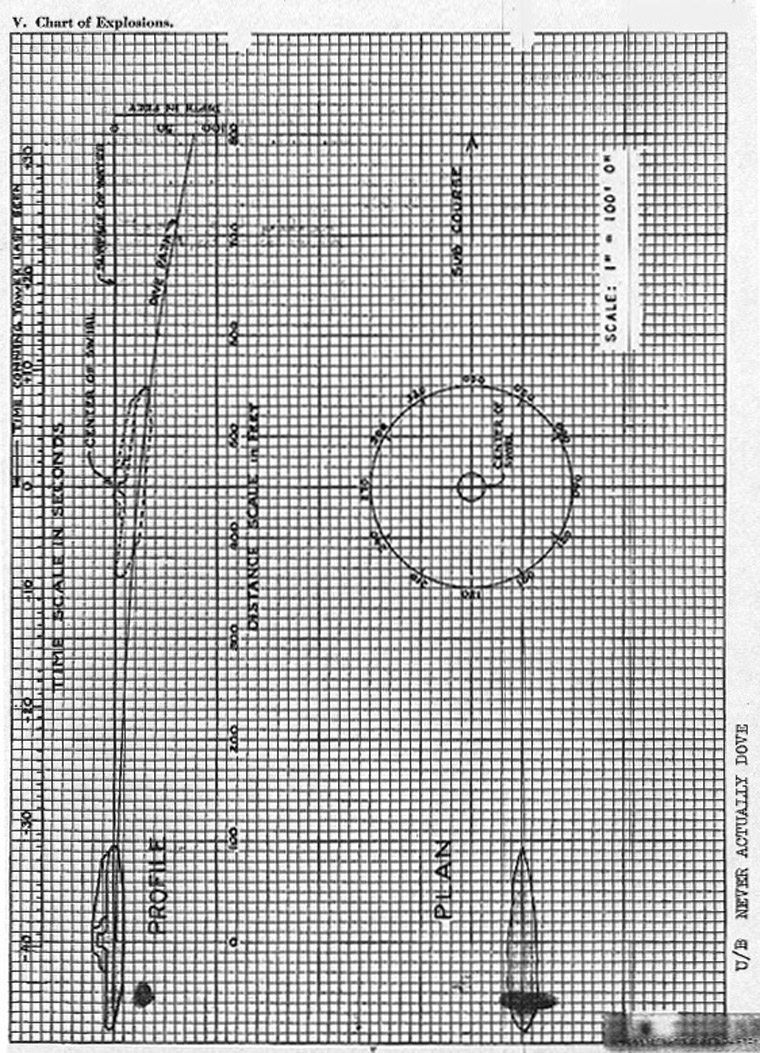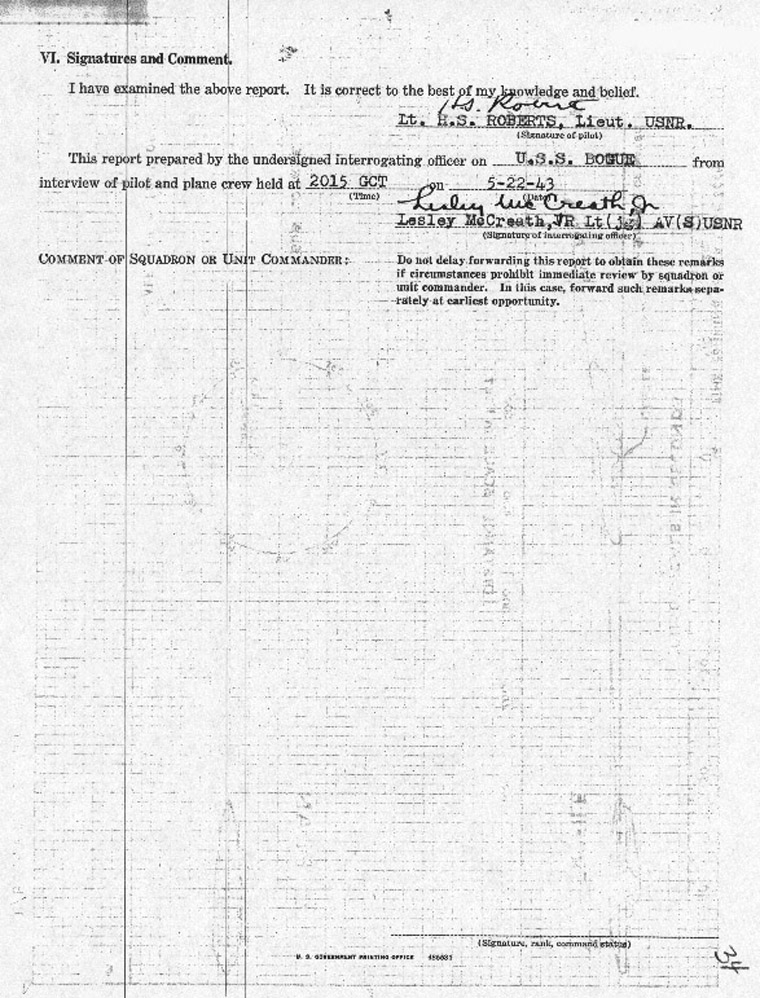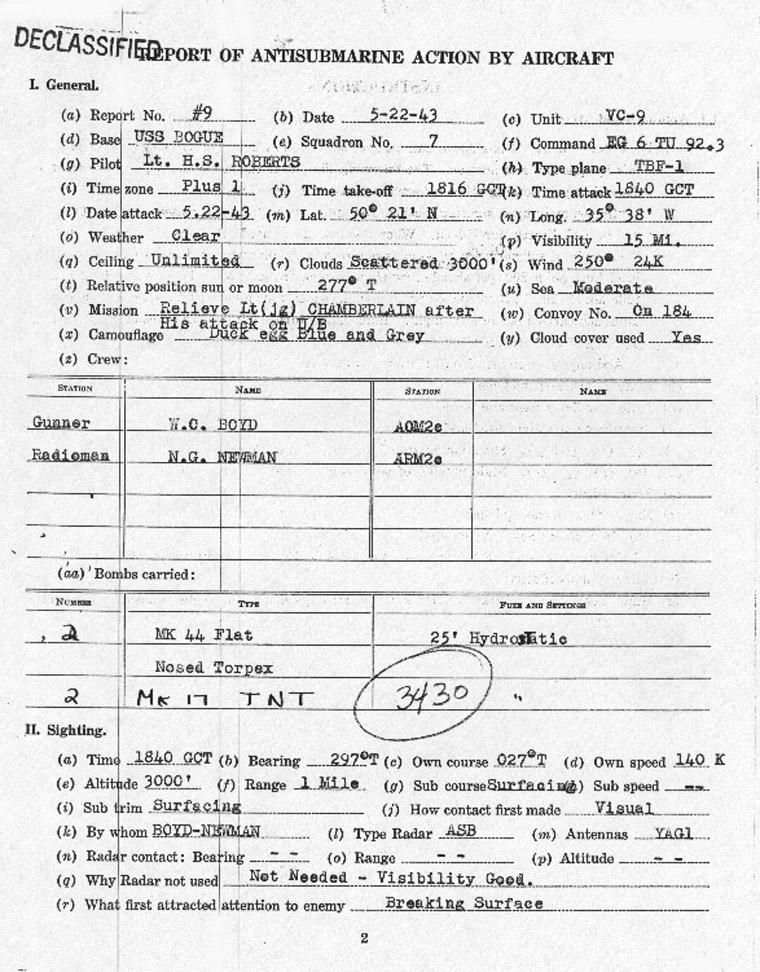
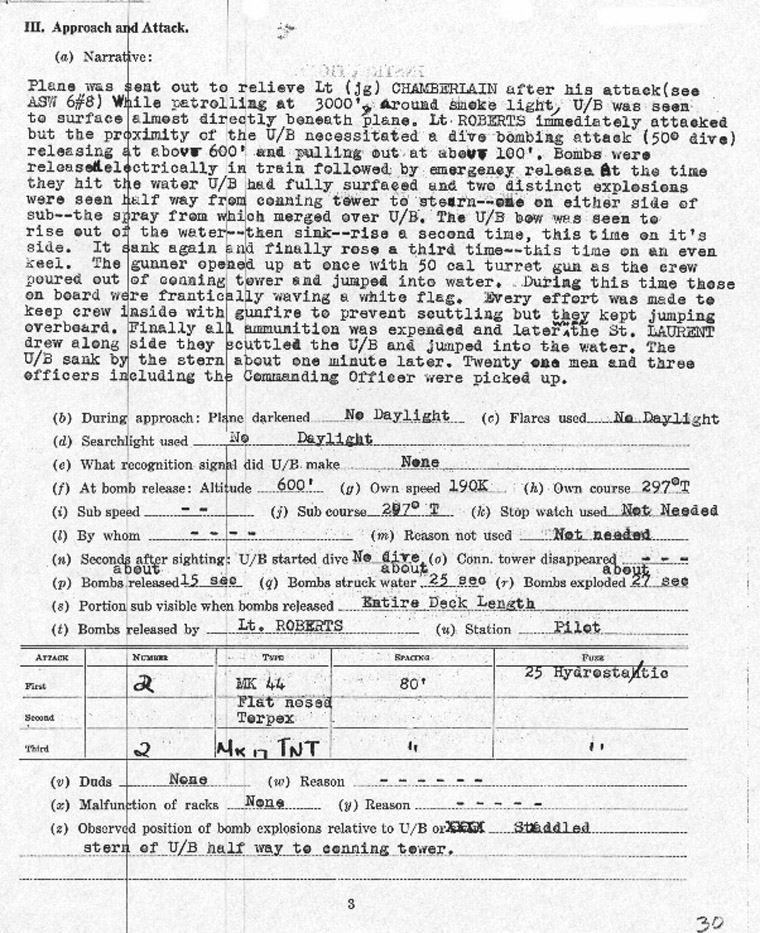
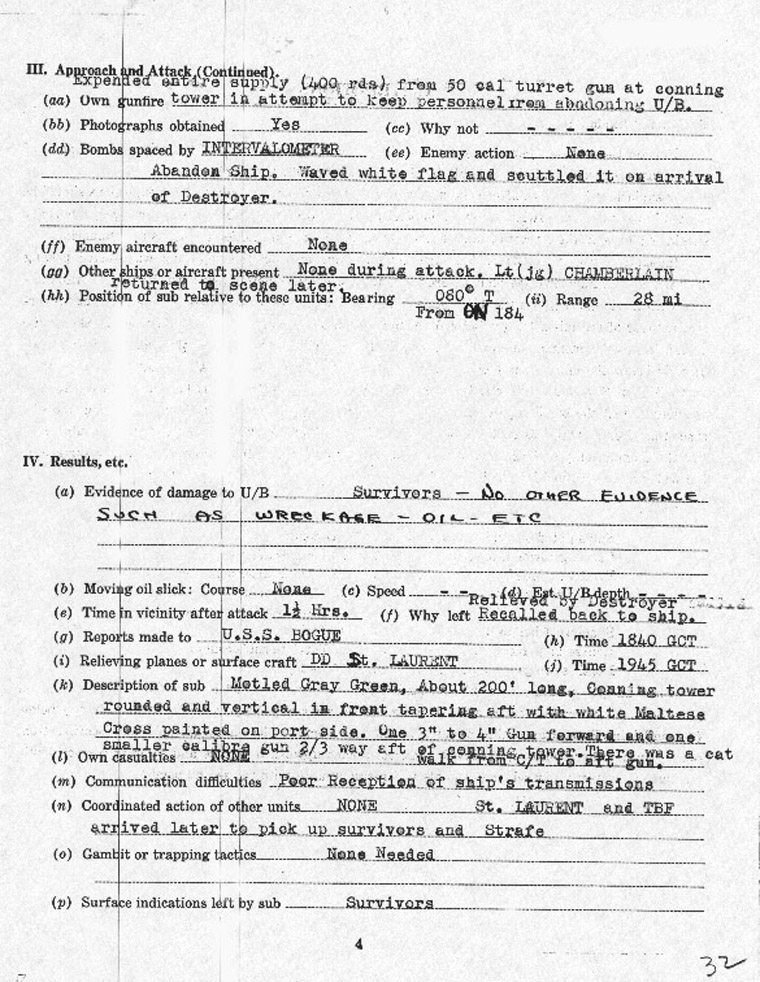
| III APPROACH AND ATTACK | ||
| (a) NARRATIVE: The following is Lt. Roberts’ own story of the attack as written by him. It is included herewith only because of its interest and because it brings out some additional details not in the ASW6 Report | ||
REPORT OF ANTI SUBMARINE ATTACK BY LT. ROBERTS |
||
| I relieved Lt. Chamberlain on station some thirty miles astern of the convoy, following his attack on a submarine in that area. I climbed to three thousand feet and commenced circling widely a smoke float in the water, using some scattered cotton ball clouds at that altitude for what they were worth for concealment. Some fifteen or twenty minutes following my arrival, the radioman or gunner said over the interphone, “Submarine surfacing below the port wing.” The bombs had been previously armed and the switches set so that all that remained to be done was to open the bomb bay doors. I pushed over to port in a glide bombing attack, line of attack almost into the sun in the west, submarine headed in that same general direction. I released at what I estimate to be in the neighborhood of six to seven hundred feet, probably a forty to fifty degree dive, using the electrical release followed by a pull on the emergency release handle, sub now fully surfaced. I immediately started my recovery using my tab wheel in conjunction with the stick and made a left turn ending up on my side at about eight hundred feet, nose high and slow. The radioman maintains that the centrifugal force exerted due to the pull out, prevented him from holding the K-20 camera to the tail window to get early pictures, but both he and the gunner who saw the explosions astern maintain that they took place on either side of the stern of the submarine. My first view of the results was of the submarine emerging from below the water nose first at an angle of perhaps thirty degrees. It slid down below the water and then emerged again nose first, still at this steep angle. This was repeated two or three times and I was under the impression at the time that he was floundering and would probably sink. He finally emerged the third time and apparently obtained buoyancy on the stern and remained up. He now listed to starboard and down slightly at the stern. The gunner began to shoot at the conning tower with his machine gun from a long range, probably we were at seven or eight hundred feet, five hundred to thousand yards out. This was successful in keeping the people aboard the submarine in it, but during an interim while ammunition cans were being changed, twenty to thirty men appeared on the conning tower and began to wave a white cloth. Further gunfire made with the intent to run the men below, resulted in most of those in the conning tower abandoning ship by jumping over board with life jackets on. The white flag was further displayed by those remaining on board and gunfire intermittently sent their way caused them to disappear from the conning tower while being shot at, but not to abandon ship. After all ammunition was expended I continued circling the submarine awaiting the arrival of the surface craft. The destroyer approached to within fifty or a hundred yards of the submarine’s beam and stopped. There were perhaps ten to fifteen men still aboard the submarine at this time. Suddenly, the destroyer backed full speed astern and shortly thereafter the submarine sank stern first in about a minute. At this time I was recalled to the ship. | ||
| H.S. Roberts | ||
| Lieut., U.S.N.R. | ||
